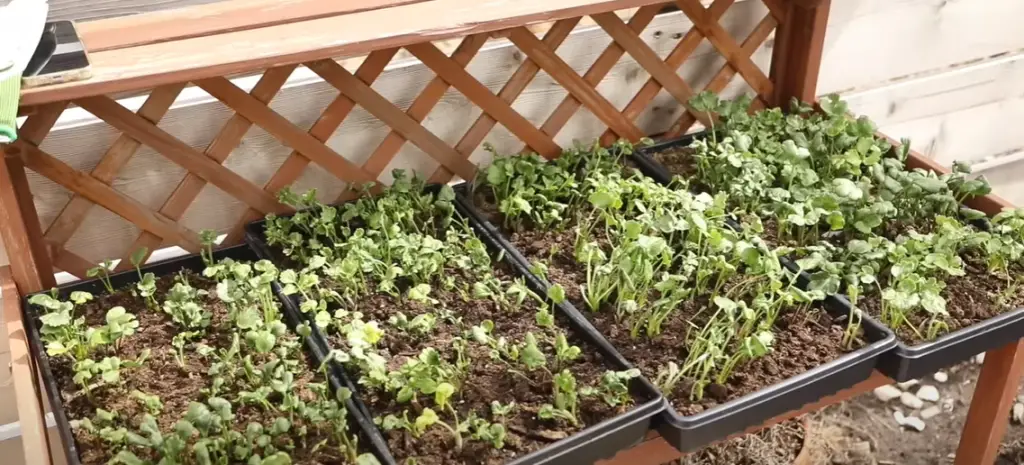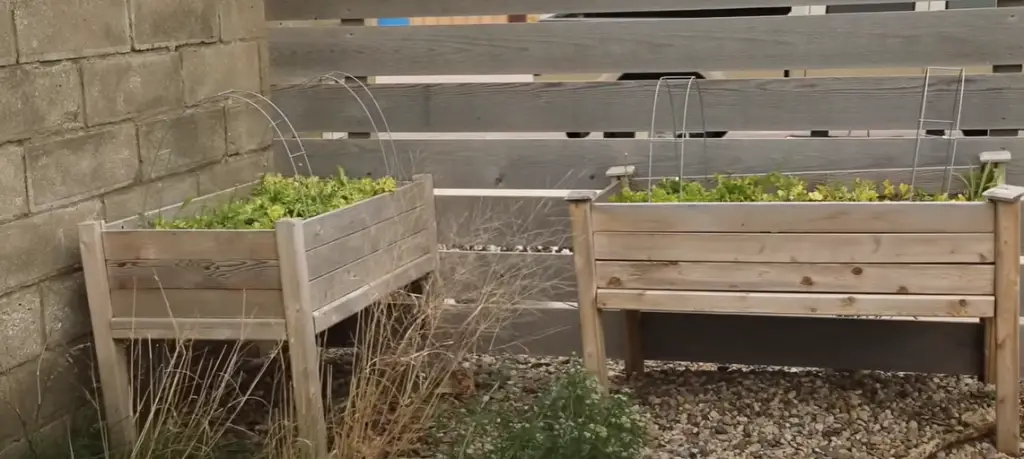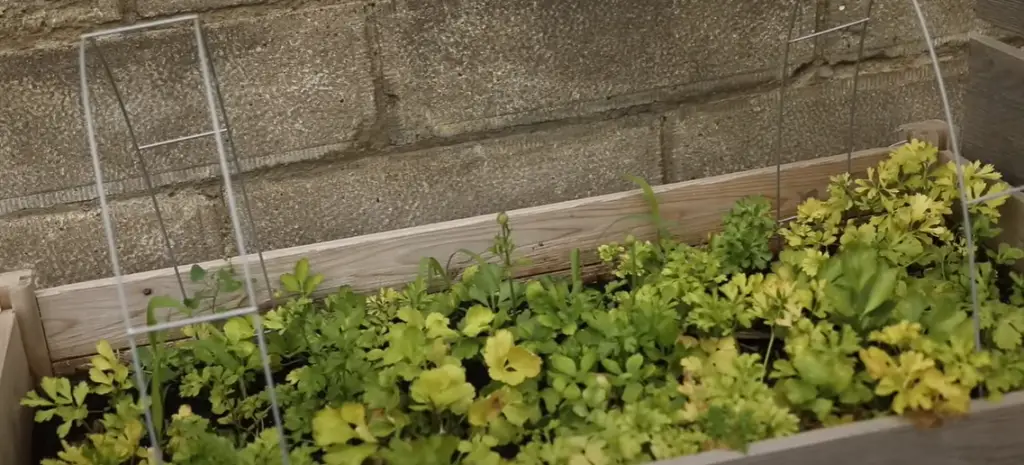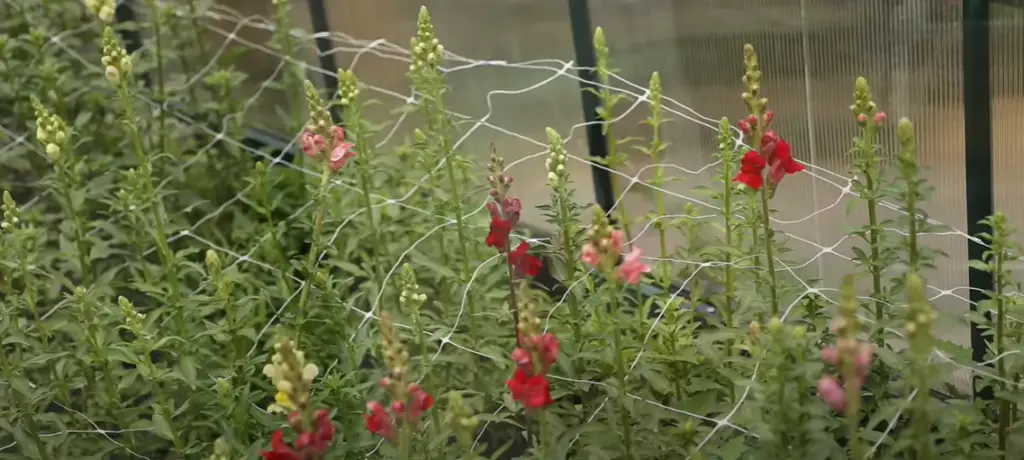If you’ve ever walked through a garden center, you’ve undoubtedly seen the stunningly beautiful ranunculus bulbs tucked away in their beds of soil. Their unique texture and array of colors immediately draw your eye – and if those blooms prompt any questions about how they grow or propagate, you’re certainly not alone! Ranunculus bulbs can easily double – or even triple – in size, meaning that more plants can be created for a fuller effect with an additional added bonus: ranunculus are almost as easy to take care of and cultivate as they are to admire. In this blog post, we reveal everything there is to know about whether ranunculus bulbs multiply and share some tips on how best to do so safely. So let’s get started – it’s time to find out once and for all whether ranunculus really does reproduce by bulb-splitting!
What are the Features and Benefits of Ranunculus?
Ranunculus is a genus of flowering plants known for their showy blooms and beautiful foliage. These plants are easy to grow and maintain, making them an ideal choice for gardeners of all levels. Ranunculus also offers many features and benefits to those who choose to cultivate them in their gardens or flower beds. [1]
- Colorful Blooms: Ranunculus plants come in a variety of vibrant colors, including yellow, orange, pink, and purple. The flowers can be single or double-petaled and often have multiple layers of petals on each bloom. This wide range of colors provides gardeners with the opportunity to create stunning displays in their flower beds.
- Long Bloom Period: The blooming period of Ranunculus plants typically extends from late spring to early summer, giving gardeners a long period of time in which they can enjoy the vibrant colors of the flowers.
- Easy Maintenance: Ranunculus plants require minimal maintenance, making them easy to care for even for newcomers to gardening. They are generally pest and disease free and need only minimal watering and occasional fertilizing.
- Good Cut Flowers: Ranunculus flowers are also great cut flowers, making them perfect for arrangements or bouquets. The blooms last up to a week when cut and kept in water, giving gardeners plenty of time to enjoy their colorful flower creations.
- Attracts Pollinators: Ranunculus plants are also great for attracting pollinators, such as bees and butterflies. The bright colors of the flowers help to attract these beneficial insects, allowing gardeners to create a vibrant and healthy ecosystem in their gardens.
- Hardy: Ranunculus plants are also quite hardy and can tolerate a wide range of growing conditions. They can grow in both full sun and partial shade, as well as a variety of soil types. This makes them an ideal choice for gardeners who have limited space or unique growing environments. [2]

Do Ranunculus Bulbs Multiply?
It is a natural process for them to do so, and it helps them spread across the landscape. These plants are perennials that typically come back every year in regions with mild winters. In order for ranunculus bulbs to multiply, they must form offsets or “daughter” bulbs around the base of the parent bulb. These offsets can then be planted in order to propagate the species. [3]
When ranunculus bulbs are growing in ideal conditions, they will typically form clumps of multiple bulbs that grow together and reproduce. This is a great way to enhance their beauty in your garden or landscape, as it makes for a fuller, more vibrant display of flowers and greenery.
Once you’ve divided the ranunculus bulbs, you can replant them in fresh soil in your garden or landscape. This will give each bulb more room to grow and will help keep them healthy. With proper care, ranunculus bulbs can multiply and thrive, bringing vibrant color to your garden each year.
It’s important to remember that ranunculus bulbs are very sensitive to temperature extremes. If temperatures drop too low for too long, the bulbs may not survive or may take longer than usual to begin growing in the spring. This is why it’s crucial to choose a planting site that will provide them with enough warmth and proper drainage. Additionally, water the bulbs regularly during the growing season to keep their roots moist. With the right care, ranunculus bulbs will continue to multiply and bring you beautiful blooms each year! [4]

How to Propagate Ranunculus?
When propagating ranunculus, it’s important to remember a few key things.
1 Step: Soaking Seeds
The first step of propagating ranunculus is to soak the seeds in warm water overnight. This will help soften the shell and allow for easier germination. Make sure to keep track of how long you’ve soaked them; usually 12-24 hours is sufficient, but it’s best to check before planting.
2 Step: Preparing the Soil
Once you’ve soaked your ranunculus seeds, it’s time to prepare the soil for planting. Make sure to mix in some compost or peat moss to give the seedlings an extra boost of nutrients. You should also make sure that the soil is well drained. If possible, use a mixture of sand and loam to create an ideal environment for the ranunculus plants.
3 Step: Planting and Caring for Ranunculus
When you’re ready to plant your ranunculus, dig a hole about one inch deep and place a seed in each hole. Make sure not to bury them too deeply as this can inhibit germination. Once planted, water the seeds lightly and keep the soil moist.
It’s also important to fertilize your ranunculus plants regularly. Use a balanced fertilizer with a higher nitrogen content and apply according to the instructions on the package. Be sure not to over-fertilize, as this can cause damage to the plant’s roots. [5]
When to Plant Ranunculus?
Ranunculus is a beautiful and hardy flower that grows well in most climates. It prefers moist, well-drained soil and full sun to partial shade. If you are looking for an eye-catching addition to your garden, ranunculus may be the perfect choice!
So, when to plant these flowers?
Spring Planting
The best time to plant ranunculus is in the spring, when temperatures begin to warm up. Ranunculus bulbs should be planted 4-6 inches apart in loose soil. For a more dramatic look, plant them closer together for a fuller display of blooms. Make sure to water your bulbs well after planting and keep the soil moist throughout the growing season.

Summer Planting
Ranunculus can also be planted in the summer, although it’s not as ideal a time. If you do plant your bulbs in the summer months, make sure they have plenty of shade and water to survive the hot temperatures. It may take a bit longer for them to bloom, but with proper care they will eventually produce beautiful flowers.
Fall Planting
Fall is the perfect time to plant ranunculus bulbs if you want early blooms next spring. The soil should still be warm enough for them to establish a strong root system before winter sets in. Make sure to water the bulbs well and add a layer of mulch to help insulate them from the cold. [6]
How to Plant Ranunculus?
It is crucial to select a sunny spot where the soil will be well-drained. If drainage is an issue in your yard, you may want to amend the soil with sand or gravel before planting. Also make sure that the area where you are planning to plant your ranunculus is free of weeds and debris.
- To start, dig a hole about 2-3 inches deep, and spread the roots of the ranunculus bulb in the hole.
- Fill the hole with soil up to ground level, making sure that no roots are sticking out.
- Compact the soil so that it will hold together when watering.
- Water your ranunculus plant generously at least once a week, making sure that the soil is moist but not soggy.
- Spread a 1-2 inch layer of mulch around the ranunculus plant to help conserve moisture and keep weeds at bay.
- Fertilize your ranunculus every few weeks with an all purpose fertilizer, following instructions on the package for dosage amounts.
- Deadhead spent flowers to keep your ranunculus blooming longer and encourage new growth.
- Divide large clumps of ranunculus in the fall or early spring, when the plants are not in bloom.
- Cut back any foliage that is wilted or browning to make way for new growth next season.
- With the right care, your ranunculus will provide you with beautiful blooms for several years to come! [7]

Ranunculus Care Tips
In order to keep your ranunculus blooming and healthy, there are some things you should be aware of when caring for them.
Tip #1: Planting
Ranunculus should be planted in well-draining soil that is slightly acidic. If possible, use a potting mix designed for bulbs or add some compost to the soil before planting. Make sure to dig a hole twice as deep and twice as wide as the bulb itself when planting.
Tip #2: Watering
Ranunculus should be kept moist but not overly wet. Water them once a week during the growing season and allow the soil to dry out slightly between waterings. During the winter months, you may want to reduce watering to once every two weeks or so.
Tip #3: Fertilizing
You can add a slow-release fertilizer when you first plant the bulbs. During the growing season, apply a liquid fertilizer every two weeks or so.
Tip #4: Mulching
Mulch can be used to help keep moisture in and weeds out. Try using shredded bark or straw around your ranunculus plants for best results.
Tip #5: Deadheading
Deadheading or removing dead flowers will help encourage new blooms. To do this, simply remove the old flower heads and stems when they start to wither.
Tip #6: Storing
Once your ranunculus plants have stopped blooming, dig them up and store the bulbs in a cool, dry location. This will help protect them from cold weather and pests during the winter months. When spring arrives again, replant the bulbs to enjoy new blooms!
Tip #7: Pest Control
Ranunculus can be susceptible to various pests such as aphids and slugs. To control these, you can use a variety of methods including hand-picking the pests, using insecticidal soaps or natural predators like ladybugs. You may also want to practice good garden hygiene which includes removing any dead plant matter or weeds from your garden to reduce pest populations.
Tip #8: Dividing
If your ranunculus plants become overcrowded, you can divide them every two to three years in the late winter or early spring. This will help promote new growth and keep your plants healthy for many more seasons of blooms! [8]
What Diseases Can Ranunculus Have?
Ranunculus can be susceptible to various diseases, including Fusarium wilt, Pythium root rot, Rhizoctonia blight, and Sclerotinia stem rot.
Fusarium wilt
Fusarium wilt is caused by the fungus Fusarium oxysporum. This fungus is soil-borne and invades through the roots of the plant. Symptoms of this disease include yellowing of foliage, wilting, stunted plants, and defoliation. It can also be identified by reddish brown streaks on the stems. To prevent this disease, it is important to practice crop rotation and soil sanitation.
Pythium root rot
Pythium root rot is caused by the fungus Pythium spp. This fungus can spread quickly in wet soils and warm temperatures. Symptoms of this disease include stunted plants, wilting, yellowing of foliage, and root decay. To prevent this disease from occurring, it is important to practice crop rotation and avoid planting in wet soils.
Rhizoctonia blight
Rhizoctonia blight is caused by the fungus Rhizoctonia solani. This fungus can be identified by dark brown lesions on the stems and foliage of a plant. Symptoms include wilting, yellowing of foliage, and stunted plants. To prevent this disease from occurring, it is important to practice crop rotation and avoid planting in wet soils.

Sclerotinia stem rot
Sclerotinia stem rot is caused by the fungus Sclerotinia sclerotiorum. This fungus can be identified by white fluffy growth on the stems or foliage of a plant. Symptoms include wilting, yellowing of foliage, and stunted plants. To prevent this disease from occurring, it is important to practice crop rotation and avoid planting in wet soils. Additionally, fungicides can be used to control the growth of the fungus.
In addition to these diseases, Ranunculus can also suffer from various insect infestations including aphids, mites, mealybugs, and thrips. To prevent these infestations, it is important to practice good garden hygiene by removing any debris, weeds, and diseased plants. Additionally, beneficial insects such as ladybugs can be introduced into the garden to help control pest populations. [9]
FAQs
Do ranunculus produce more than one flower?
Yes! Ranunculus can produce up to five flowers per stem. To get the most blooms, it is recommended that you plant ranunculus in clumps in order to provide plenty of airflow and sunlight for each stem. This will ensure maximum production of beautiful blooms!
Can I save ranunculus bulbs?
Ranunculus bulbs are a great option for saving from season to season because they’re easy to store. To save your ranunculus bulbs, wait until after the plants have finished blooming and then carefully dig them up. Brush off any excess dirt from the bulb and separate individual bulbs at their base, cutting away any roots that may still be attached. Place the bulbs in a paper bag and store them in a cool, dry place until you’re ready to plant them again. When it’s time to replant your ranunculus bulbs, make sure you choose an area that has well-draining soil and plenty of sun. Plant several inches deep and water regularly to ensure a long-lasting bloom!
What is the difference between corms and bulbs in ranunculus?
Corms and bulbs are two different types of plant structures that can be found in ranunculus plants. Corms are a type of storage structure, consisting of modified stems or leaves that store energy for the plant. They look like small round balls and contain all the nutrients that the plant needs to grow. Bulbs, on the other hand, are composed of fleshy leaves that form a stem at the base. They are used mainly for storing food, as well as to provide protection from extreme temperatures or drought. Unlike corms, bulbs can be broken up and replanted, making them a popular choice for gardeners.
Why are ranunculus expensive?
Ranunculus are a beautiful flower that are prized for their delicate petals and cheery colors. However, due to the labor-intensive process of cultivating and harvesting them, they can be quite expensive compared to other kinds of flowers. Growing ranunculus requires carefully monitored conditions to ensure that the plants develop properly. Additionally, because of their delicate nature, they require extra care and attention when it comes to harvesting them.
In addition to their labor-intensive cultivation, ranunculus have a relatively short blooming season. Usually only lasting between two and four weeks. This means that they can be difficult for growers to predict when they will be in bloom, and can cause prices to fluctuate. As a result, ranunculus often come at a premium and can be difficult for customers to find during the off-season.
Useful Video: Ranunculus Update : What I Learned and 2023 Grow Plan
Final Thoughts
In conclusion, ranunculus bulbs are an incredible flower for your garden due to the great range of colors they can bring and their long blooming period. When taken care of, ranunculus bulbs stay healthy and multiply with no problem, enabling you to have a beautiful flower year after year in your garden. If you’re looking for something unique when it comes to flowers then consider adding some ranunculus bulbs to your garden! You won’t be disappointed. Ranunculus may take a little bit more effort when planting and caring for, but with the right advice and the right spot in your garden you’ll soon be able to see them in bloom all summer long. Careful aeration is necessary if crowding occurs, but dividing will enable them to continue blooming indefinitely. With a little bit of effort, thought and preparation – ranunculus bulbs can be a worthwhile addition to any home garden!
References:
- https://www.jardineriaon.com/en/ranunculus-repens.html
- https://www.gardenia.net/genus/ranunculus-asiaticus-persian-buttercup
- https://plantpropagation.com/everything-about-the-ranunculus-flower/
- https://petalsandhedges.com/do-ranunculus-bulbs-multiply/
- https://www.bhg.com/how-to-plant-and-grow-ranunculus-7551456
- https://grow.edenbrothers.com/planting-guide/ranunculus-bulbs/
- https://growinginthegarden.com/how-to-grow-ranunculus-5-tips-for-growing-ranunculus/
- https://www.gardenia.net/guide/learn-how-to-plant-care-and-grow-terrific-buttercups
- https://www.gardenguides.com/105855-ranunculus-pests-diseases.html










Leave a Reply
View Comments